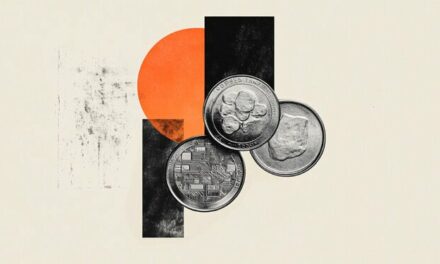Silver (XAG/USD) edges higher on Thursday, maintaining its recovery above the $48 mark as the United States (US) government shutdown deepens market uncertainty. At the time of writing, XAG/USD trades around $48.40, gaining 0.60% on the day, following a strong rebound from earlier-week lows.
The political stalemate in Washington, now extending into its sixth week, continues to weigh on sentiment and spur demand for safe-haven assets such as Silver and Gold. Investors remain cautious as the budget impasse threatens to curb economic activity and delay key macroeconomic data releases, including the Nonfarm Payrolls (NFP) report.
Meanwhile, the US Dollar (USD) softens slightly, with the US Dollar Index (DXY) retreating below the 100 mark after touching a five-month high earlier this week. The ongoing fiscal uncertainty and mixed US data, including stronger-than-expected readings from the ADP Employment Change report and the Institute for Supply Management (ISM) Services Purchasing Managers Index (PMI), have complicated the outlook for the Federal Reserve’s (Fed) next move.
Market participants now expect the central bank to maintain its current policy stance in December, with the probability of a rate cut diminishing after last week’s robust data. However, persistent geopolitical tensions, coupled with the shutdown’s potential impact on growth, keep the broader outlook for Silver constructive.
According to the World Gold Council (WGC), global demand for precious metals remains solid, bolstered by record inflows into Exchange-Traded Funds (ETFs) and sustained central bank purchases. This backdrop, combined with a softer Greenback, continues to underpin Silver’s appeal as an alternative investment and inflation hedge.
In the near term, Silver’s gains could moderate as investors await fresh guidance from Federal Reserve officials later in the day. Nonetheless, the combination of political uncertainty, steady ETF inflows, and resilient safe-haven demand suggests that the grey metal is likely to remain supported above the $48 threshold.
Silver FAQs
Silver is a precious metal highly traded among investors. It has been historically used as a store of value and a medium of exchange. Although less popular than Gold, traders may turn to Silver to diversify their investment portfolio, for its intrinsic value or as a potential hedge during high-inflation periods. Investors can buy physical Silver, in coins or in bars, or trade it through vehicles such as Exchange Traded Funds, which track its price on international markets.
Silver prices can move due to a wide range of factors. Geopolitical instability or fears of a deep recession can make Silver price escalate due to its safe-haven status, although to a lesser extent than Gold’s. As a yieldless asset, Silver tends to rise with lower interest rates. Its moves also depend on how the US Dollar (USD) behaves as the asset is priced in dollars (XAG/USD). A strong Dollar tends to keep the price of Silver at bay, whereas a weaker Dollar is likely to propel prices up. Other factors such as investment demand, mining supply – Silver is much more abundant than Gold – and recycling rates can also affect prices.
Silver is widely used in industry, particularly in sectors such as electronics or solar energy, as it has one of the highest electric conductivity of all metals – more than Copper and Gold. A surge in demand can increase prices, while a decline tends to lower them. Dynamics in the US, Chinese and Indian economies can also contribute to price swings: for the US and particularly China, their big industrial sectors use Silver in various processes; in India, consumers’ demand for the precious metal for jewellery also plays a key role in setting prices.
Silver prices tend to follow Gold’s moves. When Gold prices rise, Silver typically follows suit, as their status as safe-haven assets is similar. The Gold/Silver ratio, which shows the number of ounces of Silver needed to equal the value of one ounce of Gold, may help to determine the relative valuation between both metals. Some investors may consider a high ratio as an indicator that Silver is undervalued, or Gold is overvalued. On the contrary, a low ratio might suggest that Gold is undervalued relative to Silver.







